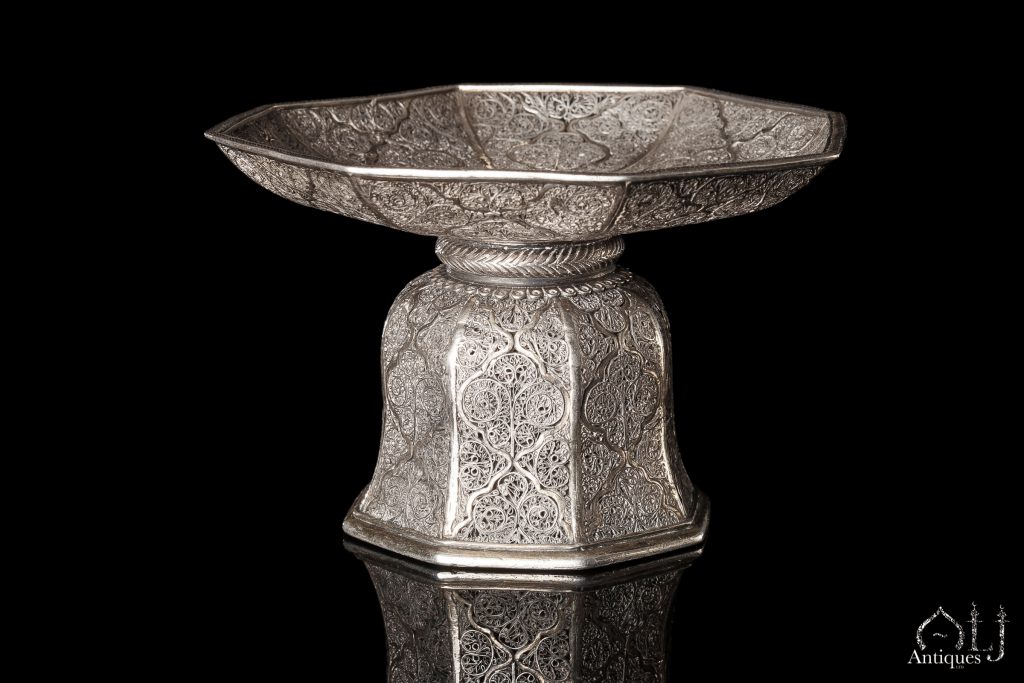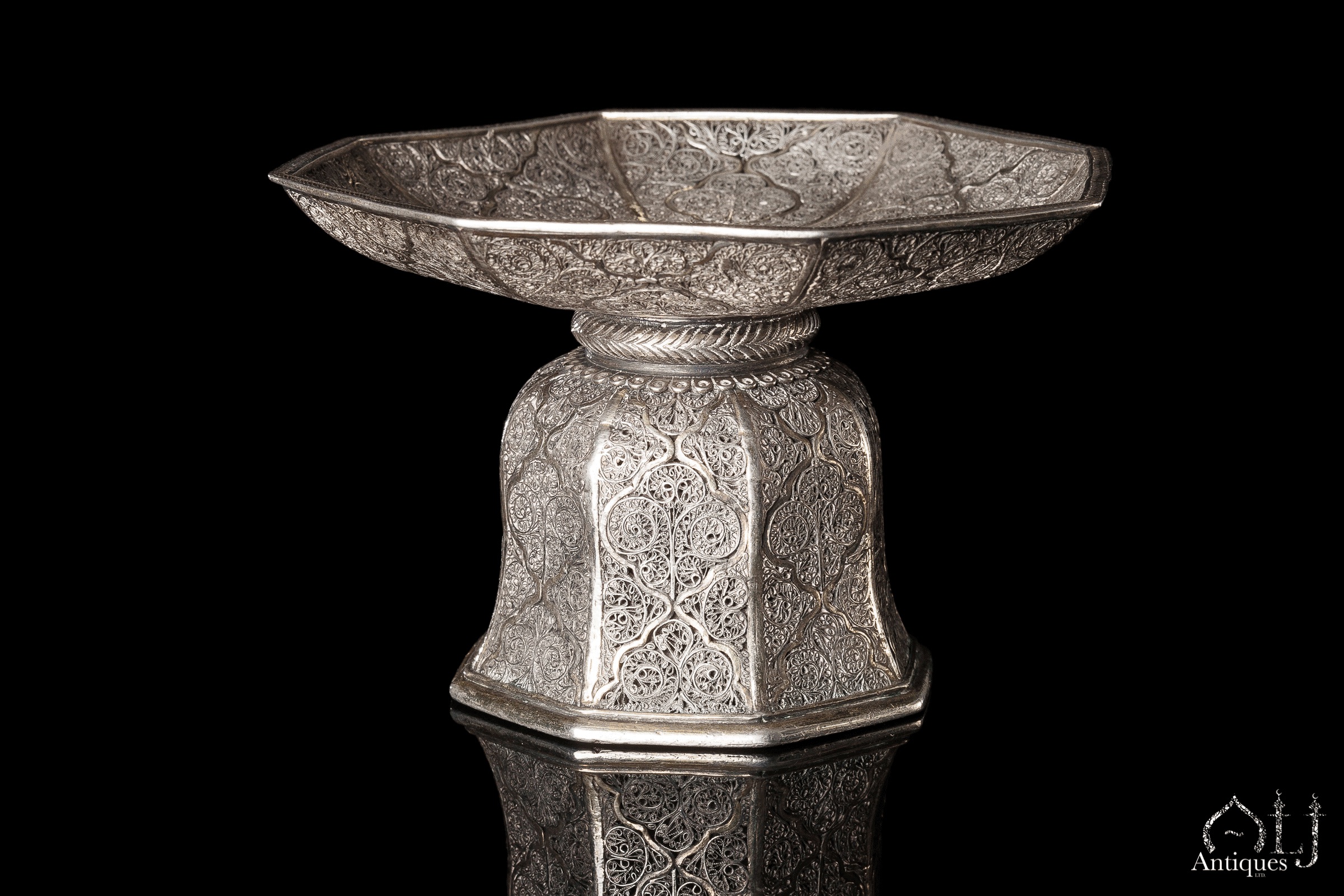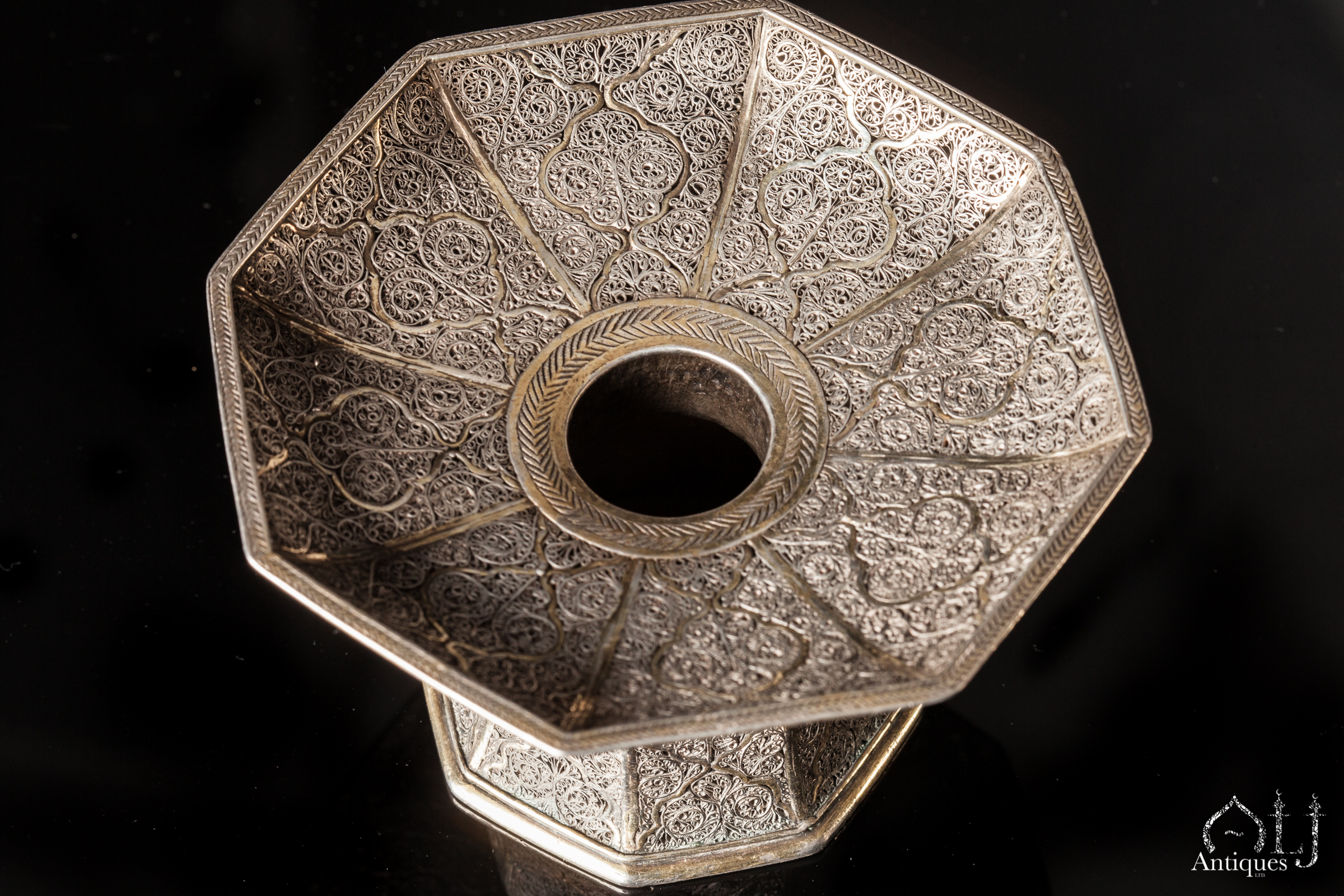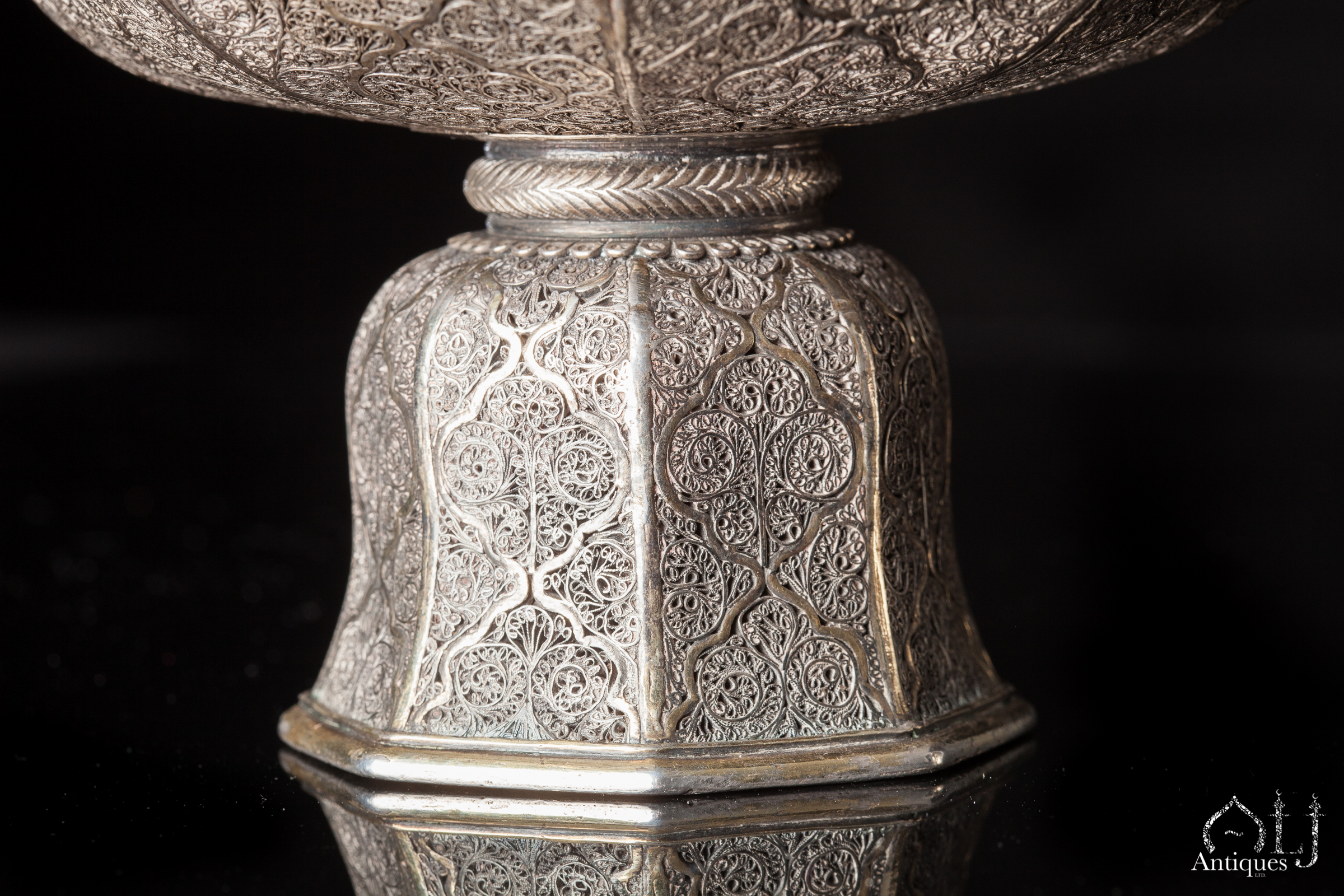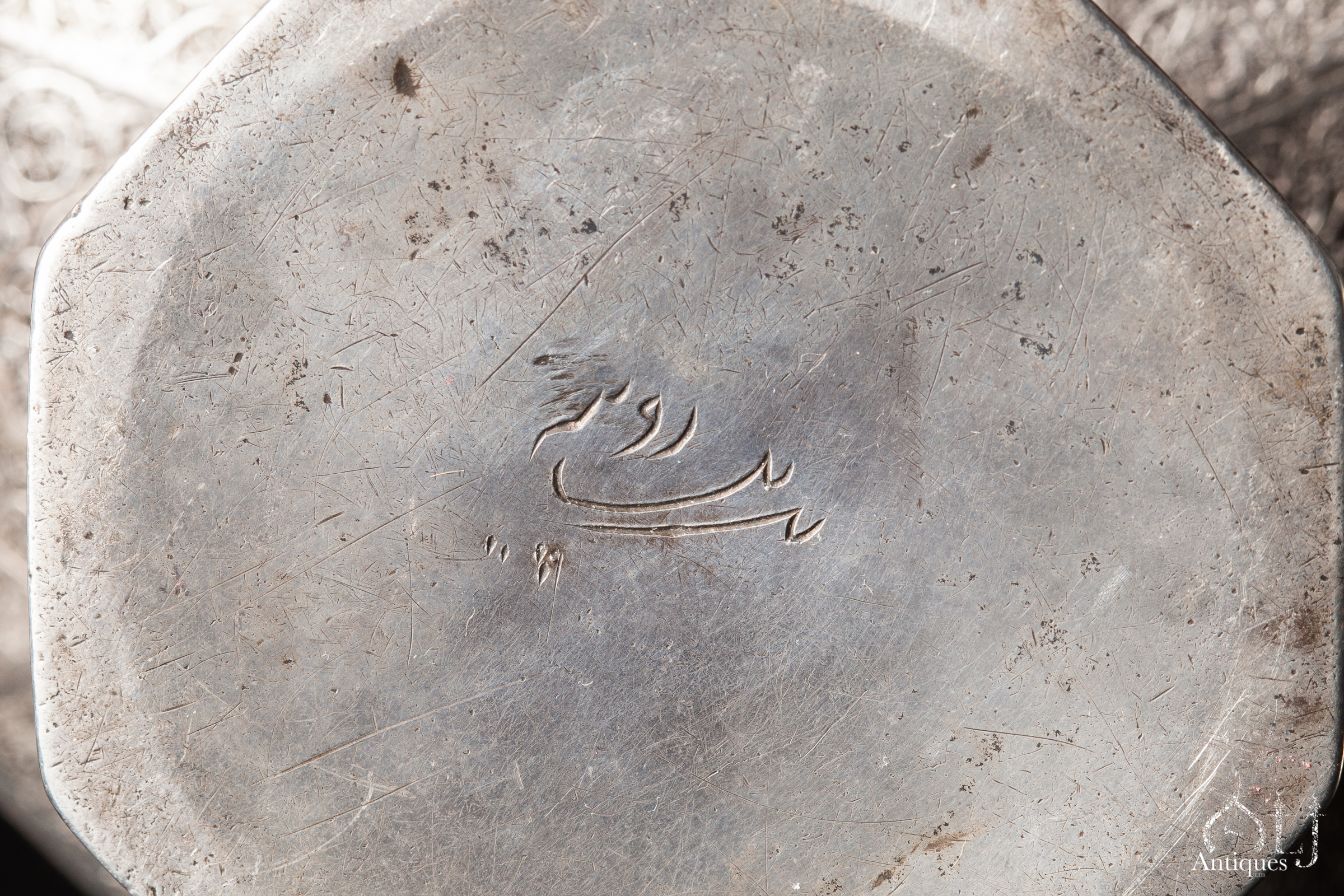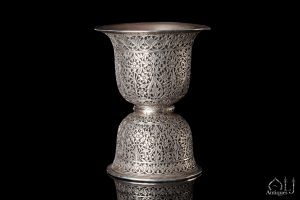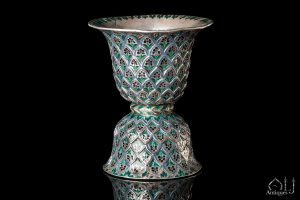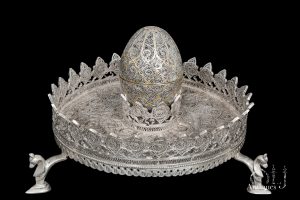Description
During Both the Deccan rule in Central-India & The Mughal Era in Northern-India, noblemen and high ranking Indian Individuals were enjoying a very high quality life style and there was some fun related practices used in their gatherings and festivities such as smoking tobacco in wastepipes (Huqqah Bases) and chewing betel nut (pan) which was a very common activity that required the use of both a betel box (Pandan) and the spittoon (pikaddan) and the betel nut cutter, which was used to expectorate the waste after chewing the betel fruit.
Chewing the mixture of the areca nut (betel nut) with the betel leaf (a piper-betel is a different plant) after adding to it occasionally additional lime or spices was a common tradition in various parts of India and south East Asia is a tradition, which dates back thousands of years.
Spittoons, wastepipes or (Huqqahs) and other drinking and eating vessels which were made out of precious metals such as Gold and Silver were considered very important utensils and they were a kind of luxurious and expensive objects which only the privileged few who can offered acquiring them, these objects were treasured and kept in a secure and safe places in both the Daccani and Mughal household such as the spittoons which were produced in large numbers in brass and bidriware but rarely in Gold and silver and sadly the majority of these were melt down and generally spittoons are much rarer today than wastepipes.
The lower section of early deccani and Mughal spittoons were globular, while the upper part was large round and splayed and its walls were gently inclined so the fluid would flow into the lower base.
In later periods such as the 18th century upwards the shape of the spittoons had gradually changed but the lower part or base had became much more bell shaped in imitation to huqqah bases, gradually the upper part of the spittoon had also become of a similar bell shape as the base maybe with the same dimension or slightly larger.
Spittoons that have survived which had been made with rather cheaper materials, such as Bronze, Brass and Bidri-ware can still be found, but not in precious metals such as Gold and Silver.
A popular center in the making of fine Bronze and Brass spittoons was Lahore in Sinda and Bidri-ware that was made in Bidar in the Deccan area.
For similar examples please see, Zebrowski, figures 260-26.
For a similar fine spittoon that was made in fine colourful Glass with fine gilding and enamelled decoration, please see Glass of the Sultans, The Metropolitan Museum of Art, New York, The Corning Museum of Glass, Stefano Carboni And David Whitehouse lot, 139 pages 285-286.
For an early spittoon example with a similar shape to our lot 167, please see Bidri-ware and Damascene Work in Jagdish & Kamla Mittal Museum of Indian Art, by Jagdish Mittal, Hyderabad, 2011, lot12 pages 72-73.
For a later spittoon example that was made in Bidri-ware, please see Bidri-ware, Inlaid Metalwork from India, by Susan Strong, at the Victoria and Albert Museum, London, lots, 52 & 53, Pages 70-71.
For very similar Filigree Parcel-Gilt Silver work, Please see the cosmetic box that was found at the apartment of Tipu Sultan’s Palace in Mysore, Looted after the battle of Seringapatam (1799), exhibited at the Islamic section at the British Museum, London.
The only available example of spittoons that were made in precious metal such as silver, that we have managed to trace, please see:- The Raj, India and the British 1600 – 1947, by C. A. Bayly.
Please also see the oil painting of Madhu Rao Narayan, the Martha peshwa, with Nana Fadnavis and attendants, where a clear similar example of the silver spittoon can be seen sitting on a mat, beside other treasures, lot 172, p.161.
Condition: Excellent and intact.
N.B:- Dear customers (Lots 167, 168 & 169) are sold together. As you may know, a collection of three Silver spittoons is extremely rare and to the best of our knowledge, none of similar spittoons have survived. .

